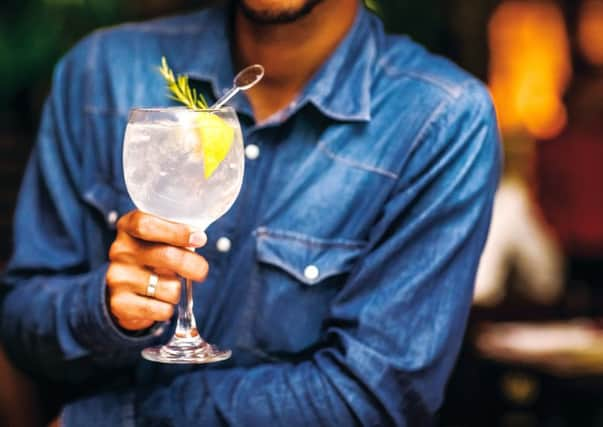Brand is at the heart of every business


At the heart of every business is its brand, or trade mark. It might be the catchy slogan “I’m lovin’ it” which starts your stomach rumbling at the thought of a Big Mac meal. Perhaps it’s the recognisable peaks of the Toblerone packet which are synonymous with the Swiss chocolate treat, or the familiar curve of a Coca Cola bottle.
Whatever product or service you’re trying to sell, it needs protection and while registering a trade mark might sound like a daunting process, taking the initiative and seeking professional advice from a trade mark attorney at the outset will pay dividends further down the line.
Advertisement
Hide AdAdvertisement
Hide Ad“Your trade mark is your badge of origin,” explains Mike Vettese, director trade marks at Murgitroyd, one of the world’s leading intellectual property attorney firms.


“It says ‘these are my products as opposed to someone else’s’. It allows customers to repeat the purchase if it proves to be positive and to avoid it if it proves to be negative.”
Branding is all around us, on the back of a bus ticket, on the pocket of a pair of jeans and on the bag of crisps you pick up for lunch.
It dictates which bottled water we buy, which supermarket we choose to shop in. In an average day, we are likely to see – whether we realise it or not – somewhere in the region of 4,000 to 10,000 marketing messages.
With Scotland’s increased focus on growing and championing its food and drink offering, there are countless new businesses bringing innovative products to market which need protection.


Vettese says, for his part, he is seeing a huge amount of activity in gin and whisky production. With 70 per cent of UK gins produced in Scotland, there’s a lot of competition and it’s all the more important to stand out and register the brand that makes your product unique.
“You need to think about whether the packaging is sufficiently distinctive to achieve recognition.
“Thought should be given to whether a client wants to register their particular packaging, either as a trade mark or a design.
Advertisement
Hide AdAdvertisement
Hide Ad“This is particularly important for businesses producing a niche product. Gin, particularly, seems to have rocketed in importance.”
He continues: “If you are going to start establishing a brand then you really need to start with the trade mark searches.
“You don’t want to get your gin on to supermarket shelves and find two weeks down the line that someone else has the registration for that mark.
“That sets you right back to the beginning and the business will have to rebrand.”
Filing a trade mark doesn’t require the services of an attorney but with so many possible pitfalls to navigate, employing an experienced firm to do the legwork is advisable.
Gin may be the flavour of the month right now but if you register just that, problems could arise when you decide to branch out into whisky or vodka.
“Trade mark registrations last for ten years so you need to give some thought as to where the product or brand might go in the future,” says Vettese.
“Just because a client is doing one thing now doesn’t mean they won’t stray into something else further down the line.”
Advertisement
Hide AdAdvertisement
Hide AdVettese’s advice is to file for a broad description, but again, it’s worth consulting with an expert – go too broad and you could face other issues.
Once the relevant searches have been conducted to ensure your proposed trade mark is not the same or similar to anyone else’s, firms such as Murgitroyd will prepare and file the application.
“That means putting flesh on the bones in terms of the description of goods and services,” says Vettese.
“We put in more detail about what the client is doing but also about what they might do in the future. We want to keep it broad but not overly broad.
“If you go overly broad and the client is not using it and won’t use it within five years then it becomes vulnerable and you have to bear that in mind.”
So what is the key to making your brand stand out and what happens when a competitor sidles up?
“Think carefully about the brand you choose,” advises Vettese. “The best trade marks are invented words like Kodak, which means nothing.
“It’s short, it’s memorable and it’s an invented word. It just needs to be distinctive.”
Advertisement
Hide AdAdvertisement
Hide AdDistinctive, but non descriptive. For example a company producing butter can’t trademark it as “dairy” because it’s not unique to their offering – everyone wants to use it because the dairy content is part and parcel of making the spread.
“You could look at foreign languages or dead languages like Latin,” adds Vettese.
“Just be careful about how the words translate and maybe have one or two ideas in your back pocket in case the first doesn’t work out.”
If there’s confusion over a product’s branding and packaging it can lead to lost sales and a tainted reputation.
“That’s where our experience and judgment comes in. We compare the marks and ask whether they are visually the same, do they sound the same, do they mean the same thing.
“You need people to know that it’s your product and always associate it with you.”
A trade mark can cover a whole raft of aspects from the name to the colours on the logo, or even a smell or sound – although for obvious reasons protecting a scent can present its own challenges.
It’s also territorial, so where a product is expected to sell well in the US, a trade mark application will need to be filed in the US.
Advertisement
Hide AdAdvertisement
Hide AdBrexit – that political hot potato – has left some of Murgitroyd’s clients scratching their heads and queuing up with questions for Vettese and his colleagues about European Union Trade Mark (EUTM) Registration.
Vettese says: “At the moment the UK is part of Europe and in order to qualify for an EU registration the applicant must be a national or a resident of an EU member state.
“We have been filing since the EU registrations came into force in 1996 for a number of different clients based across the UK but there is a huge question mark over what’s going to happen to those because they will no longer be in an EU member state.
“It’s like every other aspect of Brexit, it’s up for negotiation.”
For the new kids on the block with grand plans of making a name for themselves in Scotland’s rich food and drink sector, there’s a lot to consider before that beer, honey or rapeseed oil makes it to the market but with the right advice there is a stronger chance of success.
“Seek early professional advice and don’t be afraid to come to us,” says Vettese. “It is very important to protect your reputation before you become famous.”
Protecting your brand
– Intellectual property (IP) – creative work which can be treated as either an asset or physical property. Intellectual property rights fall principally into four main areas: copyright, trade marks, design rights and patents.
– Intellectual Property Office (IPO) – the official government body responsible for intellectual property rights in the UK.
Advertisement
Hide AdAdvertisement
Hide Ad– Trade mark – a symbol, word or words legally registered to distinguish the goods and services of one trader from another.
– Patent – a patent is granted by the government to the inventor, giving them the right to stop others, for a set period of time, from making, using or selling the invention without their permission.
– Copyright – the legal right that grants the creator of an original work exclusive rights for its use and distribution.
– Design rights – prevents someone else from copying your design and automatically protects it for ten years after it was first sold or 15 years after it was created, whichever is earliest.
– EU Trade Mark (EUTM) – a trade mark which is pending registration or has been registered in the European Union as a whole.
– Protected Geographical Indication (PGI) – a protection mark for products which are produced, processed or prepared in the geographical area you want to associate with it. The EU will only grant a product the PGI mark if they deem it to have a reputation, characteristics or qualities that are a result of the area you want to associate it with. Examples include Scottish Smoked Salmon, Scottish Farmed Salmon and Arbroath Smokies.